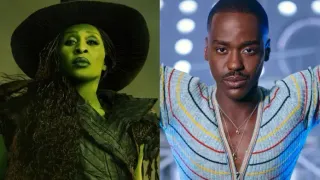
6 hours ago
"Peter Hujar’s Day: Revisiting the Heart of New York’s 1970s Queer Art Scene"
READ TIME: 2 MIN.
On December 18, 1974, photographer Peter Hujar, already known in Downtown circles for his striking black-and-white portraiture, sat for a conversation with his friend, writer Linda Rosenkrantz. This dialogue, recently rediscovered and brought to cinematic life in Ira Sachs’s "Peter Hujar’s Day," offers a rare window into the daily rhythms and inner world of a pioneering gay artist at the heart of New York’s bohemian and LGBTQ+ communities .
Hujar’s legacy is one of sensitivity, honesty, and radical intimacy. His photographs captured the vulnerability and resilience of queer New Yorkers, artists, and outsiders—a cohort that included friends and collaborators like Susan Sontag, Andy Warhol, and performers from the burgeoning drag and experimental theater scenes. Hujar’s approach was unflinching, yet compassionate, often exploring themes of sexuality, mortality, and the fleeting nature of beauty .
Ira Sachs’s film, adapted from Rosenkrantz’s transcript, is minimalist in its construction: two actors, one set, and a script composed almost entirely of Hujar’s own words. This experimental format draws viewers into the contemplative pace of Hujar’s day-to-day life, from his creative process to candid reflections on relationships, community, and survival as a gay man and artist in the 1970s .
Ben Whishaw, an openly gay actor, inhabits the role of Peter Hujar with subtlety and depth, channeling the artist’s wit and warmth. The film’s commitment to historical accuracy and emotional truth is grounded in the original conversation, which Rosenkrantz recorded as part of a project to document ordinary days in the lives of creative people—a project that now resonates as an extraordinary archival gift .
Peter Hujar’s New York was a place of both liberation and vulnerability. The Stonewall uprising in 1969 had catalyzed the gay liberation movement, and Hujar, alongside his lover and activist Jim Fouratt, documented some of the first marches for LGBTQ+ rights. His East Village loft became a nexus for artists, writers, and performers, many of whom would be lost to the AIDS crisis in the following decade .
Hujar’s only book, "Portraits in Life and Death" , juxtaposed intimate portraits of his circle—including writer Fran Lebowitz and drag performer Divine—with images of mummified corpses in Palermo’s catacombs. The work, initially met with limited recognition, is now considered a classic of American photography, emblematic of Hujar’s preoccupation with mortality and the fragility of queer life .
Hujar died in 1987 of AIDS-related complications, at a time when the epidemic was devastating New York’s queer communities. Posthumously, his work has gained widespread acclaim for its honesty and its role in chronicling the lives of LGBTQ+ individuals during a time of profound social change .
"Peter Hujar’s Day" stands as both a tribute and a reminder: a portrait of an artist whose gaze was both empathetic and unsparing, and whose life and work remain vital to the ongoing story of queer resilience, creativity, and community in New York and beyond .






